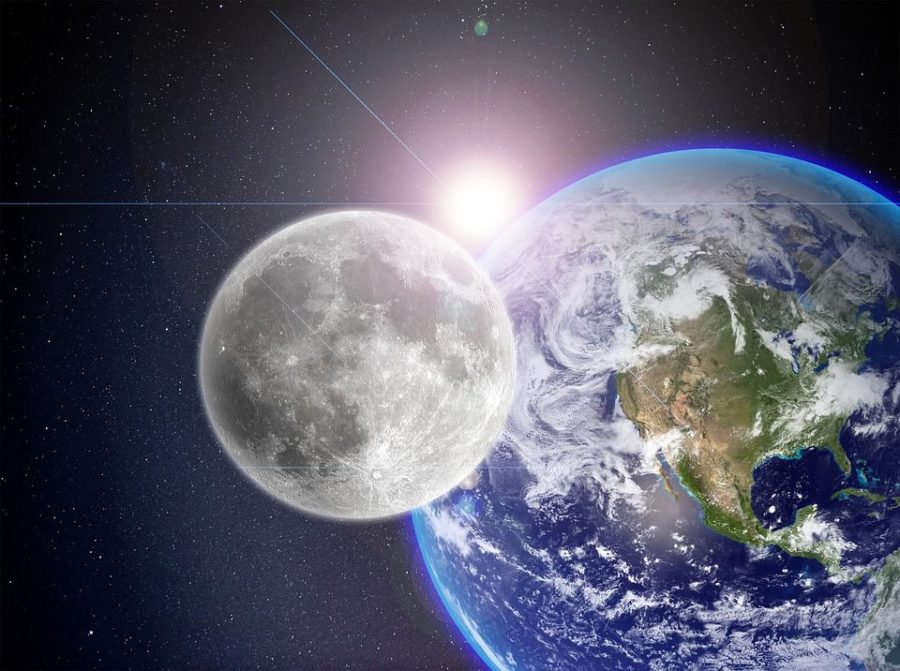Iowa State professor explains space hurricanes
March 14, 2021
The first-ever space hurricane was discovered by a team of scientists at the University of Reading. Though the geomagnetic storm was observed by satellites in August 2014, reflections on data produced evidence of an anomaly in the Earth’s ionosphere and magnetic field. The team published their findings to Nature Communications.
A space hurricane is a geomagnetic storm characterized by the fast-moving, hurricane-shaped circulation of ionized gases, also known as plasma, around the Earth’s poles.
Charles Kerton, associate professor of physics and astronomy at Iowa State, described a geomagnetic storm as a “distortion” or “disturbance in the Earth’s magnetic field” caused by “solar winds … the stream of particles coming off the sun.”
The interaction between the Earth’s magnetic field and the Sun’s solar wind often results in a display of auroras, also known as the northern lights. These curtains of varying greens, blues and, on occasion, reds and purples, are caused by the absorption of solar radiation in gases, such as oxygen and nitrogen.
Kerton said from the ground, the only indication that the 2014 space hurricane was occurring was the unique “swirling” display of spiral-shaped auroras; the hurricane itself was “teased from the data.” He said the shape of the magnetic field and plasma would appear “funnel-shaped” if it were perceivable by the human eye.
“The way that the magnetic field lines were oriented allowed electrons to rain down onto the atmosphere, and that formed an interesting spiral-shaped aurora in the polar regions of the Earth,” Kerton said. “[Scientists] actually think that there’s probably more of these space hurricanes occurring, it’s just you don’t tend to notice them.”
He said the effects of the space hurricane deal primarily with the “heating of the Earth’s outer atmosphere.” According to Kerton, the “electron rain,” emitted in part from the solar winds, causes the atmosphere to expand and act as a “drag” on orbiting satellites, which can alter the trajectory of satellites.
An abundance of electrons has the potential to damage solar equipment. However, space hurricanes offer no immediate threat to those enjoying the view of the auroras because of the absorbent gases in the atmosphere, which, Kerton said, act as a shield. Without the atmosphere, the particles would be “channeled down” to the surface.
Space hurricanes tend to occur toward the poles of the Earth due to the magnetic field lines of the Earth. Kerton compared the Earth to a bar magnet.
“If you think of a bar magnet, where … you’ve got different poles of the magnet and the magnetic field lines coming down onto the Earth’s atmosphere in particular places, it allows the electrons to move along the magnetic field lines, and they have a tough time moving across magnetic field lines,” he said. “There’s a force on them, so that allows for the electrons to crash down onto the atmosphere.”
He also said it is possible to distort the Earth’s magnetic field with stronger solar ejections, which occasionally allow auroras to reach as farther. This is why it is possible, in some instances, for the Aurora Borealis to reach as far south as Iowa. The stronger the solar winds, the more distorted the Earth’s magnetic field.
“In this case … it was a bit surprising because it was a [geomagnetic] storm occurring during a period of time when the solar activity is not that great, what we call a ‘solar minimum,’” Kerton said. “The Sun goes through an 11-year cycle of activity, where every 11 years, its magnetic poles flip. Sunspots, which are temporary areas of cooling that appear on the Sun’s surface as darker brown spots, are influenced by the Sun’s magnetic field. Times of solar minimum have the least amount of sunspots, whereas solar maximum has the most. The presentation of the Sun cycle is best represented as a pendulum: Solar minimums are represented on the left and right sides of the semi-circle, whereas the solar maximum is represented toward the center of the arc.”
This cycle has been studied extensively throughout time. Research began shortly after the invention of the telescope, when astronomers in the 1700s first observed sunspot patterns. Modern research has been able to coordinate solar flares — explosions of solar energy from the Sun — and coronal mass ejections — the release of plasma from the solar corona — with the solar cycle. In 2014, the Sun was phasing toward a solar minimum, which means solar activity was lower.
Other planets in the solar system can be affected by space weather. Kerton mentioned the requirements for space storms are that a planet must have an atmosphere and a strong magnetic field. Planets such as Jupiter, Saturn and even Uranus and Neptune have the potential to experience auroras around their poles. Similar events theoretically occur in other solar systems. Even close binary stars, which are two orbiting stars, can swap amounts of material, though they share a single magnetic field.
Kerton’s takeaway from the discovery of space hurricanes is the importance of having an open mind.
“I think what’s really neat about this is that this is something that is unexpected, and was sitting in this data set … you should always be open to coming to a data set with an open mind, seeing what’s there,” he said.
Kerton said space weather is the field where people try to understand how the Earth’s magnetic field, the ionosphere and solar winds interact.
For those interested in learning more about space weather, Kerton suggests checking out spaceweather.com or the Space Weather Prediction Center for casual viewing. For Iowa State students with an interest in solar system topics and the night sky, he recommends taking ASTRO 120 as a science elective.







